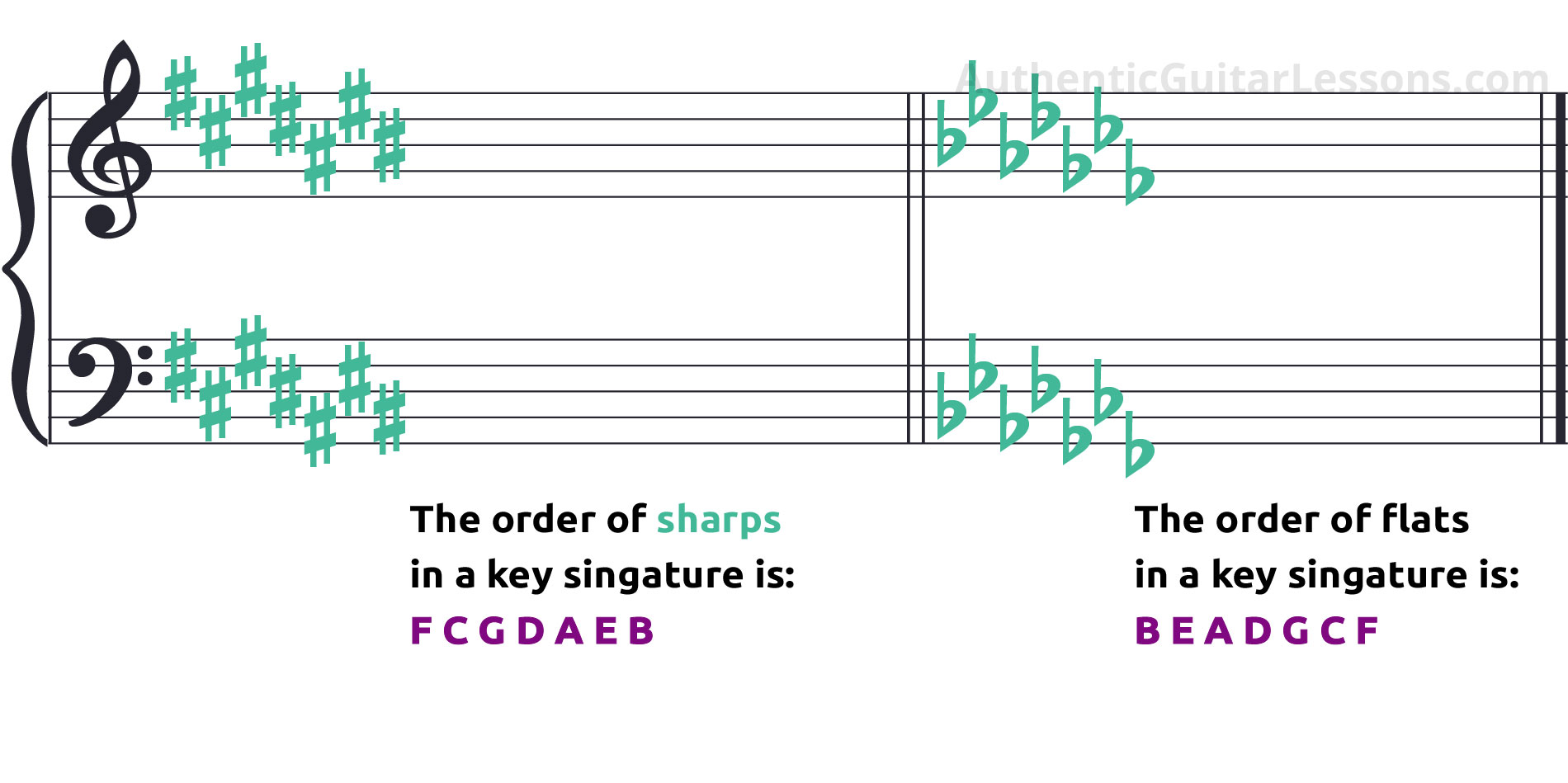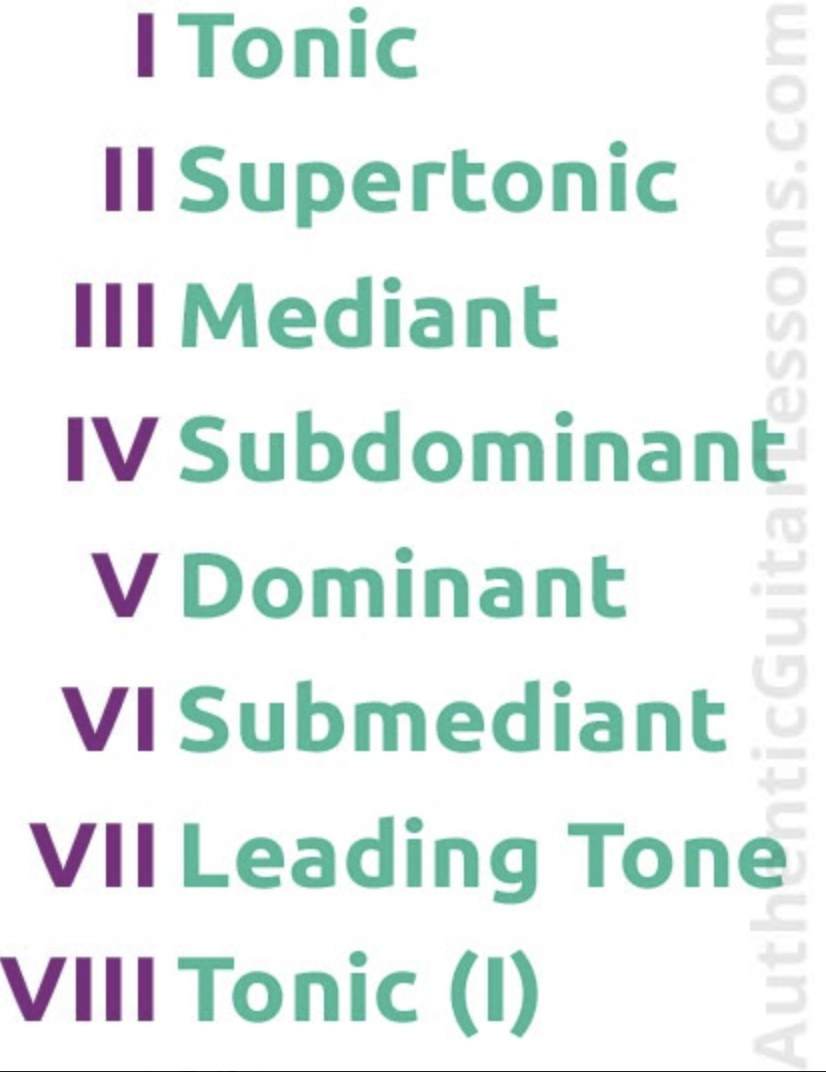In this brief elementary music theory lesson post, Sanel (guitar lessons Calgary) will introduce you to the major scale and a brief introduction to the key signature.
Knowing the patterns that occur in music scales opens up the musical expression even further, giving you the opportunity to easily transform, arrange and compose musical ideas.
What is a scale?
A series of notes in succession (in alphabetical order) make up a scale. There are many different types of scales.
Each scale’s specificity is determined by a particular combination of the whole tones and semitones (the distance between notes). These whole tones and semitones can also be referred to as steps and half steps, hence the name: scale.
The notes of a scale are numbered from the bottom up and Roman numerals are used instead of 1, 2, 3, 4…
Most common scale is the major scale.
Here is the whole tone and semitone pattern that make up the major scale.
whole tone – whole tone – semitone – whole tone – whole tone – whole tone – semitone
C Major Scale
When we build a scale starting on note C, and if we follow the pattern above (whole tones and semitones) we get the C major scale.
In a major scale, there are semitones between notes three and four, and notes seven and eight. Whole tones are between all other notes.
By following this pattern, we are able to build major scales starting on any note within the musical alphabet.
Let’s take G as our next example.
G Major Scale
For our pattern to happen, we must use an accidental (in this case F sharp) to make the pattern of whole tones and semitones to fit the mold of a major scale.

When we follow this pattern of whole tones and semitones beginning on note F, we get a scale with one accidental, which is B flat.
F Major Scale

The first note of the major scale is called the tonic (Roman numeral I). The scale has the same name as its tonic.
For example, the major scale that begins with D is called the D major scale.
The major scale that begins with B flat is called the B flat major scale.
When a piece of music is based on a particular scale, it is said to be in that key. A piece based on the C major scale is in the key of C major.
A piece based on the F major scale is in the key of F major.
D Major Scale
Here is the scale of D major using accidentals.
Here is a scale of D major using a key signature.
Key Signature
Sharps and flats are grouped at the beginning of the staff and are written after the clef.

About the guitar and music theory teacher: Sanel teaches in-home guitar lessons Calgary and zoom guitar lessons online.
Since 2005, Singersroom has been the voice of R&B around the world. Connect with us via social media below.










